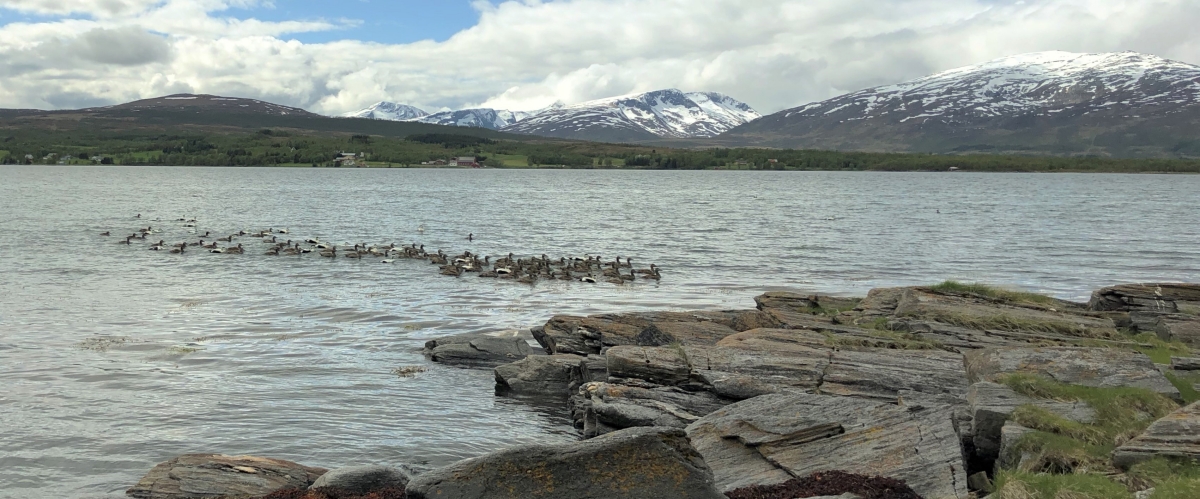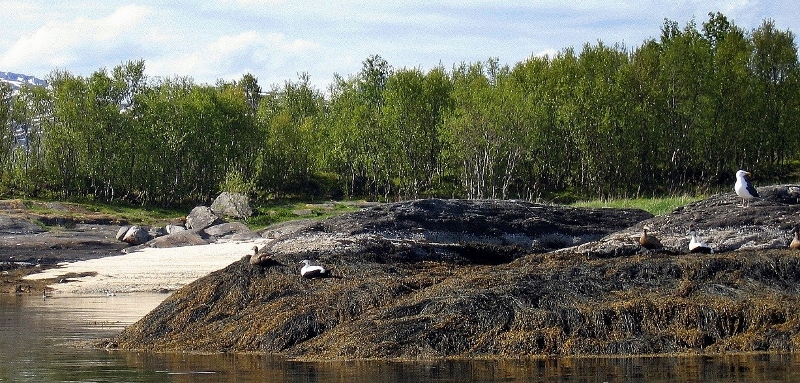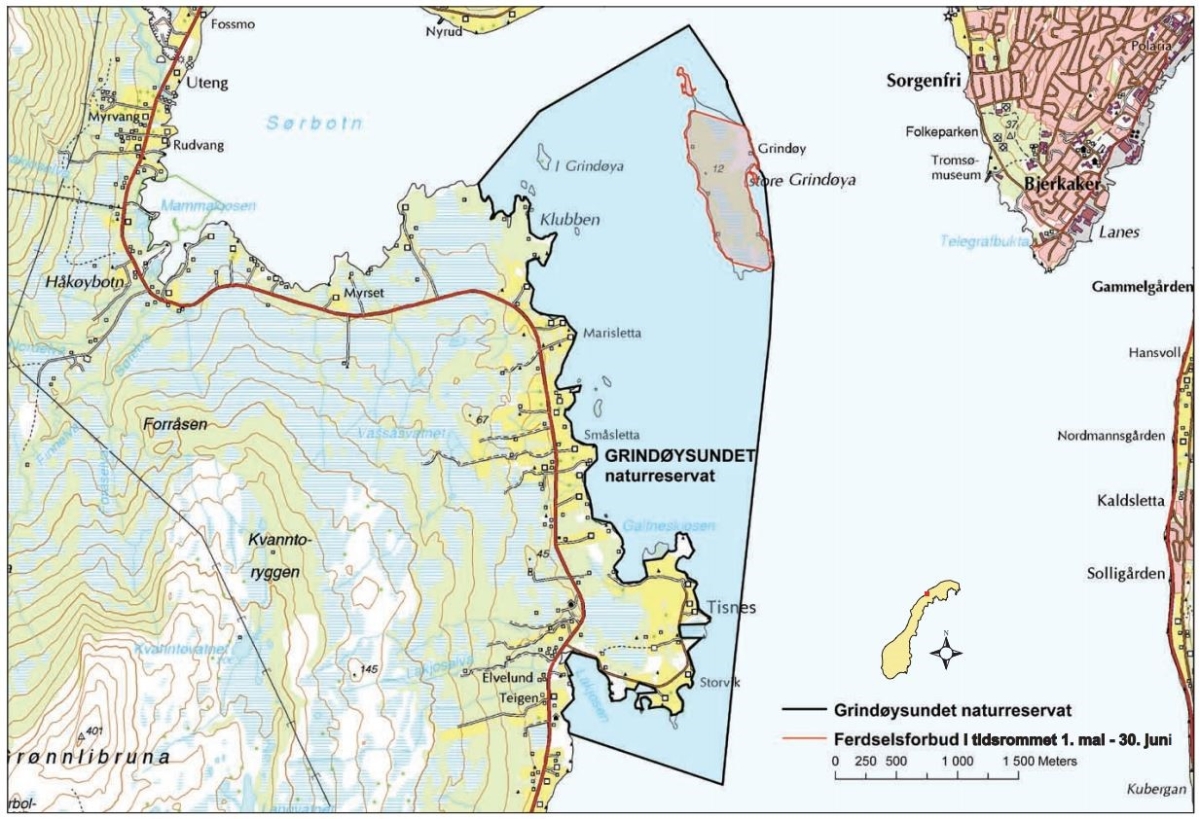Key site Grindøya
Grindøya is an island in Sandnessundet, located between Tromsøya and Kvaløya and is a part of the Grindøysundet Nature Reserve. Grindøya has been a SEAPOP key site since 2009. Grindøya and the surrounding shallow areas are important foraging and breeding areas for many duck, wader and gull species. In winter, a large number of birds, especially common eider, long-tailed duck and velvet scoter, use the waters surrounding Grindøya. Contact person: Sveinn Are Hanssen, NINA

Photo: Sveinn Are Hanssen
Location and description
Store (Large) Grindøya (69° 38′ N, 18° 51′ E), is a 0.5 km2, flat elongated island with varied vegetation. There are lush grasslands, tall-herb stands, rises covered by crowberries and both open and scrub-covered marshes. Many different vegetation systems are registered on Grindøya, including raised bogs and fens, old hayfields, dry meadows, beach meadows and rock-plants. The climate is typical of northern Norway, with quite a lot of precipitation. Mean temperatures in mid-July are approximately 12 °C and just below -4 °C in January.
Access
Access to Grindøya is relatively easy because of its close proximity to Tromsøya. Grindøya is only 2 km from the southern tip of Tromsøya. Between 1 May and 30 June, landing is prohibited, except on the beaches on the north and south ends of the island.
Wildlife
The rich bird life at Grindøya includes many annual breeders; common eider Somateria mollissima, greylag goose Anser anser, mallard Anas platyrhynchos, red-breasted merganser Mergus serrator, willow ptarmigan Lagopus lagopus, crow Corvus cornix, common snipe Gallinago gallinago, whimbrel Numenius phaeopus, Eurasian oystercatcher Haematopus ostralegus, common gull Larus canus, herring gull L. argentatus, great black-backed gull L. marinus, fieldfare Turdus pilaris, redwing T. iliacus, brambling Fringilla montifringilla og willow warbler Phylloscopus trochilus. Other birds breeding regularly but not annually include ruddy turnstone Arenaria interpres, common ringed plover Charadrius hiaticula, Eurasian woodcock Scolopax rusticola, white-tailed eagle Haliaeetus albicilla, raven Corvus corax, northern pintail Anas acuta, Eurasian wigeon A. penelope, arctic tern Sterna paradisaea and sedge warbler Acrocephalus schoenobaenus. There are no rodents at Grindøya, but in some years both stoat Mustela erminea and American mink Neovison vison are present. Eurasian otters Lutra lutra are found on the island all year around. Harbour seals Phoca vitulina are observed regularly around the island.

Photo: Sveinn Are Hanssen
Human activity
Nobody lives on Grindøya, but there are three weekend cabins that are sometimes used. Because it is so close to Tromsø, Grindøya is popular for day-trippers that arrive by boat and kayak.
Fieldwork
The common eiders breeding on Grindøya have been studied annually since 1984, making this the longest continuous time series on marine diving ducks in Norway. Fieldwork takes place from the middle of May until the end of June and consists of nest registration and the catching of females on nest for ringing or to check for rings, as well as weighing and registration of clutch sizes. In some years, blood samples have been taken to measure levels of environmental pollutants. The common eider is interesting because some of the broods are taken over by other females and large flocks of chicks can be guarded by several females. This has also been studied in the fjords around Grindøya.

Photo: Sveinn Are Hanssen



